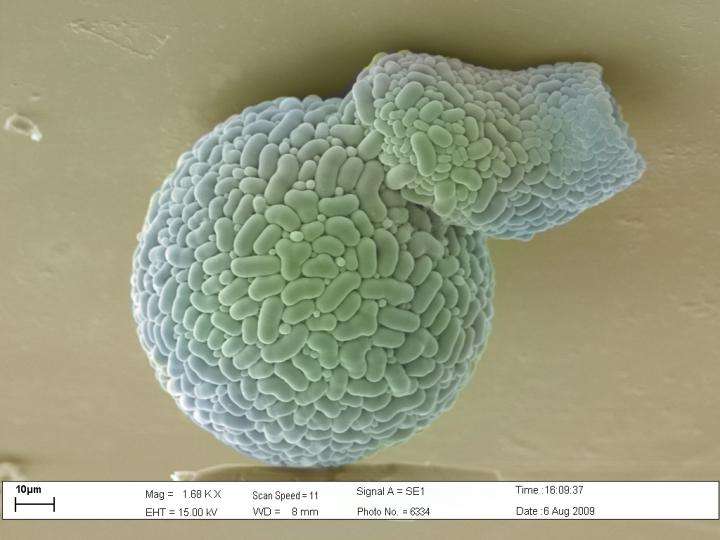Biologists explore how testate amoebae survive in peat fires

An International team from China University of Geosciences, University of York and Lomonosov Moscow State University have studied the impact of wildfire on testate amoebae—one of the dominant microbial groups in peat bogs. The research has been published in the peer-reviewed journal Applied Soil Ecology.
Testate amoebae significantly affect biochemical processes in peatland ecosystems. However, little is known about the effect of such wildfires on microbial components of bog ecosystems.
Testate amoebae are unicellular organisms, largely enclosed by a shell. They comprise up to half of all microbial biomass in peatlands. Changes in their community structure under fire exposure can have significant impacts on the structure of food webs since alteration of one important food web component influences all the others. Presence of testate amoebae in a local ecosystem also has an effect on intensity of the silicon cycle.
Silicon is the second most common chemical element in the crust of the Earth after oxygen. However, only a few organisms include inorganic silicon into their cell composition, using it as a material of construction and also for performing many physiological functions. Some groups of testate amoebae can "dissolve" solid silicon-containing components from the environment and produce plates for constructing their shells. In other words, testate amoebae constitute one of the links in the silicon cycle.
The scientists studied a peatland in northeast China that was exposed to wildfire several years ago. The territory consisted of heavily and slightly burned areas due to the fact that firemen managed to put out a fire on a part of the bog. This provided the opportunity to compare communities of testate amoebae from parts exposed and not exposed to fire.
The researchers found that fire led to significant changes in the structure of the testate amoeba community. Microorganisms that make their shells out of sandgrains survived, while those using silica plates synthesized inside the cells to make shells died. The scientists assumed that amoebae making their shells out of sandgrains are more resistant to high temperatures, since their shells are thicker and more solid due to these grains of sand.
Professor Yuri Mazei from the Department of Hydrobiology at the Faculty of Biology of the Lomonosov Moscow State University has described the method of investigation of testate amoebae: "At first, testate amoebae are separated from a soil or moss substrate. After that, the flask with this suspension is intensively shaken up and passed through a number of filters so that only amoebae shells and small suspended particles are left. Afterwards, the final filtrate is put under a light microscope. Sometimes, scientists use a scanning electron microscope in order to identify species."
Researchers from the Lomonosov Moscow State University, the University of Yorkand the University of Penza have previously proved that studies of testate amoebae's communities could be an effective tool for reconstructing past climatic changes. The results obtained in this study will also allow the consideration of modern processes when conducting paleoecological reconstructions in burned peatlands.
Yuri Mazei comments on the project results: "In peatland columns. there are often layers containing charcoal, showing that the ecosystem burned at that time and these layers can contain testate amoebae. However, if you want to correctly reconstruct climate in such a layer, it's necessary to understand how testate amoeba communities respond to wildfire in current conditions. Our research has identified these peculiarities for the first time, which should improve existing approaches to palaeoreconstructions."
More information: Andrey N. Tsyganov et al, Testate amoeba transfer function performance along localised hydrological gradients, European Journal of Protistology (2016). DOI: 10.1016/j.ejop.2015.12.002
Journal information: Applied Soil Ecology
Provided by Lomonosov Moscow State University

















